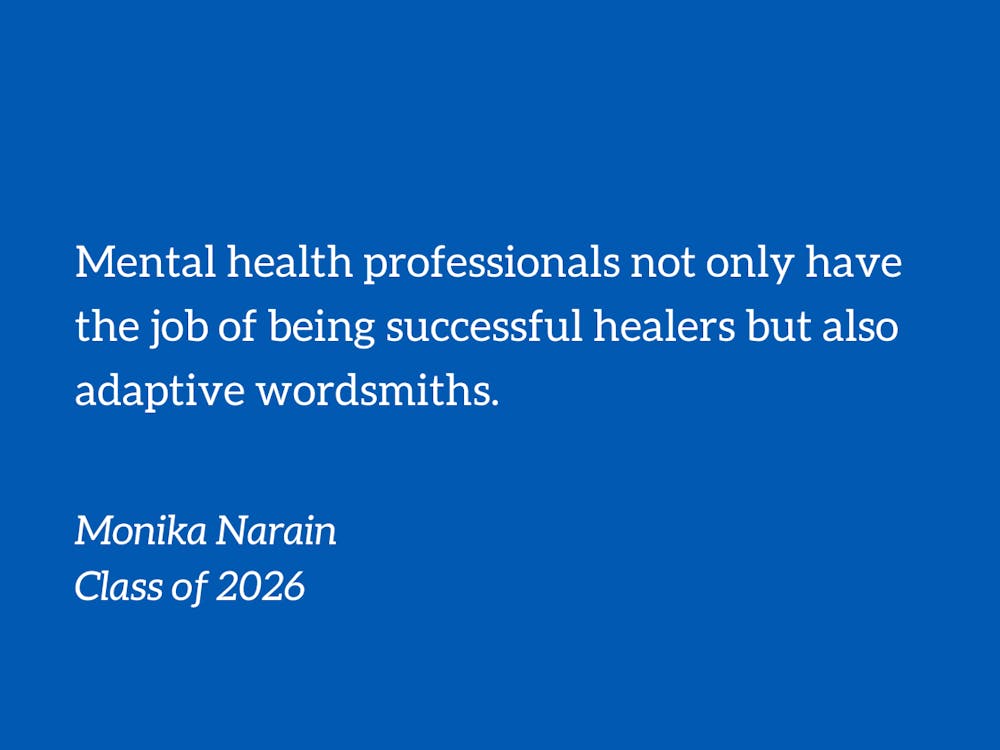“That TikTok left me depressed.”
“That dinner was traumatic.”
“I’m so OCD about my closet.”
“These cookies are addictive.”
“I’m such a workaholic.”
“Sorry, I just get bipolar about these kinds of things.”
The drive towards mental health awareness over the past decade has prompted vast discussions on the subject in news, social media, film and television. And I think it’s safe to say in a zeitgeist-y sense that at this point, we are all “aware” of mental health issues, especially as young people and especially as college students. In fact, psychiatric language has become an increasingly common part of our vernacular, to the point where we throw around terms about addiction, depression, anxiety, trauma, narcissism and many others in everyday conversation.
I call this kind of language “casual psychopathology” — creating a strange juxtaposition between words with strong clinical charge in contexts that are usually mundane. Saying that your last midterm “gave you PTSD.” Calling your frequent mood swings a “bipolar” act. Although this language aims to normalize mental illness, it actually ends up trivializing its severity. It creates a misleading perception that these conditions are fleeting feelings rather than complex, debilitating disorders. Moreover, this kind of language is usually used to describe or justify some sort of “negative” behavior (e.g. nervousness, organizing things, needing a break), which is not only a misappropriation of the term but also a perpetuation of negative stereotypes surrounding mental illnesses.
Mental health professionals not only have the job of being successful healers but also adaptive wordsmiths (emphasis on the “DSM”). In psychiatry, language is the only tool for individual diagnosis, and often language is the only form of treatment. When the language around mental illness is misused, the entire system of care suffers as a result. When we dilute words like “depression,” “trauma” and “PTSD” — especially in contexts we know are intended to be sarcastic or comedic — these words begin to lose their clinical context, a phenomenon known as semantic satiation. As a result, we collectively generate more barriers for individuals to access treatment and worsen a mass confusion and distrust in a system that is designed to help people.
I say all this critically, but I also say it hypocritically, as I’m completely guilty of doing this myself. And I know I do it because it’s the most accessible language I have for others to understand what I might be experiencing, even if I know I’m breaching scientific misinformation. And I know equitable access to mental healthcare is still a complete crapshoot, leaving most people to digital resources for their own self-advocacy. And I also know that the language of mental illness is inherently subjective; for example, what is considered “traumatic” for me probably won’t be traumatic for someone else. And then I fall into the cognitive rabbit hole of questioning, what do any of these words even mean? Who gets to decide those definitions? And is it even safe to include it in colloquial use?
There is a difference between knowing something makes you anxious versus something that worsens your anxiety. There’s a difference between wanting things done a certain, precise way and living with OCD. We think that this language is harmless, but this kind of language is the foundation of improving the increasingly elusive concept of “mental wellness.” Emotional literacy is about recognizing and articulating one’s emotional state using emotion words, not the conditions associated with emotional dysregulation. Why does it feel necessary in our campus culture that we need to use clinical language to describe natural and often vulnerable reactions? Or to justify our very real desires for things like rest, good food or alone time?
If we cannot necessarily rely on a psychiatric consensus to advocate for our vulnerable experiences, we can at least strive towards a method of self-communication better rooted in neutrality.
Monika Narain is a Trinity junior. Her column typically runs on alternating Thursdays.
Get The Chronicle straight to your inbox
Signup for our weekly newsletter. Cancel at any time.

